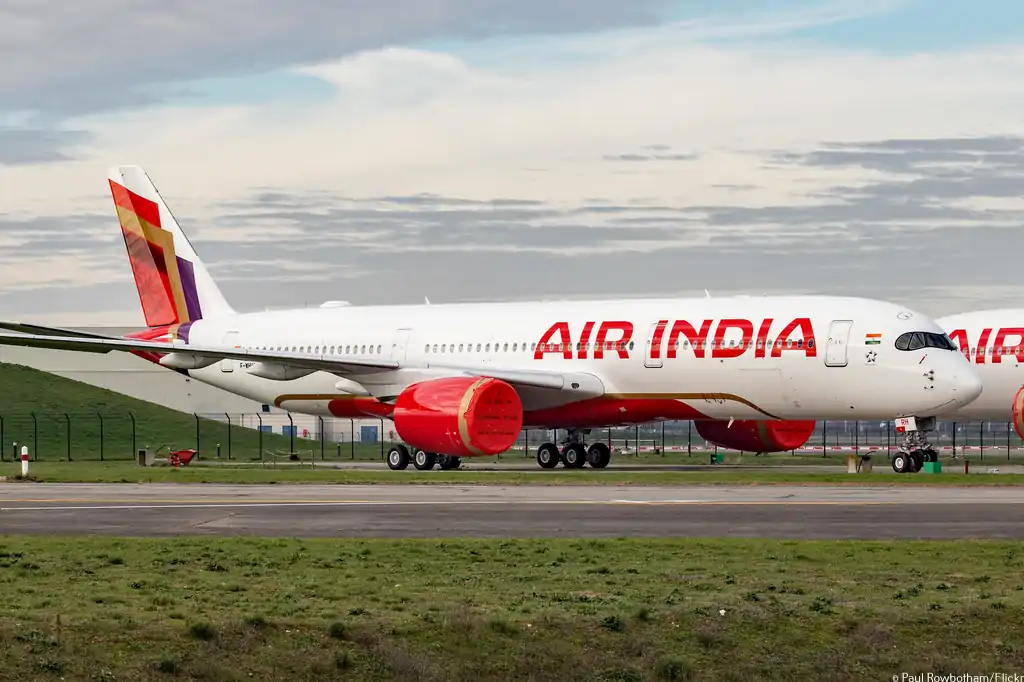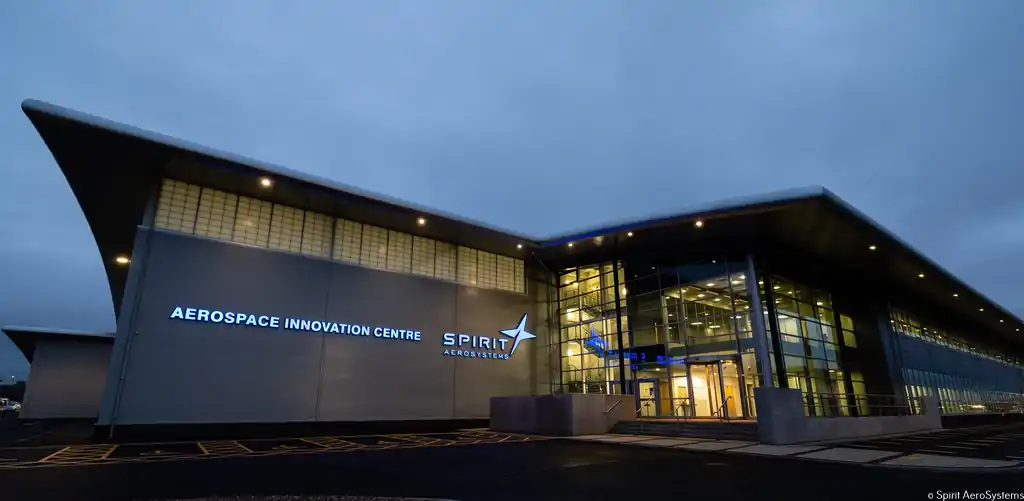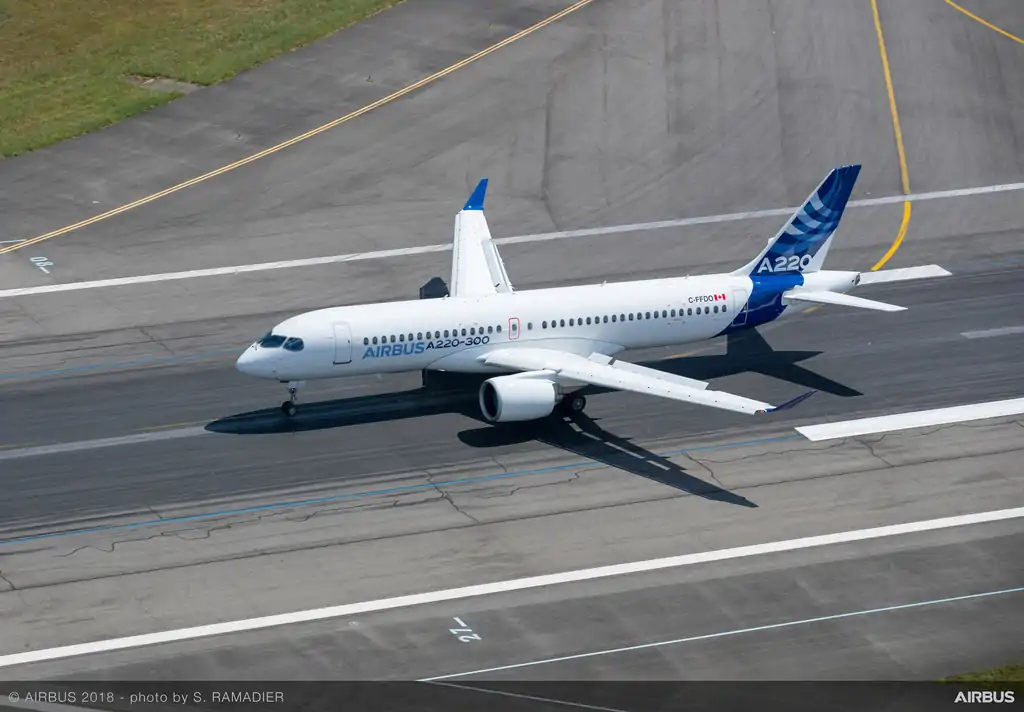Is Go First Grounded for Good? The Challenge of Deregistering 54 Aircraft
Abhishek Nayar
04 May 2024

The aviation industry, often a high-stakes arena, is witnessing yet another saga of challenges and complexities with the deregistration of Go First's fleet of 54 aircraft. As industry experts delve into the details, the path to ferrying these planes out of the country seems fraught with obstacles, raising questions about the future of the airline and the broader implications for the aviation sector.
The Deregistration Dilemma
The Directorate General of Civil Aviation's (DGCA) recent move to deregister all 54 remaining aircraft of Go First, following a Delhi High Court ruling, has thrown the airline's revival efforts into uncertainty. With lessors now permitted to reclaim the leased planes, the spotlight shifts to the logistical hurdles involved in this process.
Maintenance Matters
A critical aspect complicating the deregistration process is the maintenance status of the aircraft. While around 24 planes were reportedly in a flying condition when operations ceased in May last year, the lapse in continuous maintenance work poses a significant challenge. These aircraft, although potentially airworthy with minimal maintenance, require approvals from engine maker Pratt & Whitney and Airbus for technical ferrying.
Engine Woes and Spare Part Scarcity
Of the 54 planes, approximately 30 are without engines and spare parts, exacerbating the timeline for their removal. Aircraft leasing company Vman's CEO, Vishok Mansingh, highlighted the extended duration needed to fly out these aircraft, estimating up to six months to a year, contingent on the availability of engines and spares. This scarcity further prolongs the process, raising concerns about operational viability.
Regulatory Roadblocks and Insolvency Proceedings
Amidst the deregistration saga, Go First's voluntary insolvency resolution process adds another layer of complexity. With two bidders in contention for the airline's assets, including Busy Bee Airways and Sky One, regulatory directives have accelerated the deregistration timeline. The recent Delhi High Court directive to the DGCA underscores the urgency of processing lessors' applications, emphasizing the intricate interplay between legal mandates and operational realities.
The Future Trajectory
As stakeholders navigate the labyrinth of deregistering aircraft and steering through insolvency proceedings, the overarching question looms large: What lies ahead for Go First and the aviation industry at large? The outcome of these deliberations carries significant implications, not only for the airline's fate but also for market dynamics and investor sentiment.
Conclusion
The deregistration of Go First's fleet unveils a multifaceted narrative of operational challenges, regulatory imperatives, and industry dynamics. As the aviation community grapples with the intricacies of this process, the resolution of these issues will shape the trajectory of the airline and resonate across the broader aviation landscape. Amidst uncertainty, one thing remains certain: the journey ahead promises to be as turbulent as the skies these planes once soared.
Read next
Air India has started daily flights between Delhi-Dubai using its brand new Airbus A350 plane.
The airline commenced flights on the busy Delhi-Dubai route using its brand-new Airbus A350-900 aircraft in the airline’s bold new livery from Wednesday.
Flight AI-995 will leave Delhi at around 9 pm and flight AI-996 will leave from Dubai at 12 am.
With this, Air India’s flagship aircraft marked its international debut and Air India becomes the only carrier to operate the A350 between India and Dubai.
Air India celebrated the occasion with pre-departure ceremonies, with guests at both airports presented with A350 memorabilia.
At Dubai airport, Satish Kumar Sivan, Consul General of India, Dubai, Jamal Al Hai, Deputy CEO, Dubai Airport and Mohammed Abdulla Lengawi, Director General, Dubai Civil Aviation Authority lit the ceremonial lamp the inaugurate the aircraft’s first departure from Dubai.
Air India’s A350-900 aircraft features a three-class cabin configuration with 316 seats: 28 private Business suites with full-flat beds, 24 Premium Economy seats with extra legroom and other amenities, and 264 spacious Economy seats. All seats on the aircraft feature the latest-generation Panasonic eX3 in-flight entertainment system and HD screens that offer more than 2,200 hours of entertainment content from around the world.
Air India started inducting the A350s earlier this year as part of the 470 new aircraft order that Air India placed a year ago.
Air India currently operates a total of 72 flights a week to Dubai from five Indian cities, of which 32 flights are from Delhi.
Read next
In the wake of a tumultuous period marked by safety crises and financial challenges, aerospace giant Boeing finds itself at a critical juncture. With pressure mounting to revitalize production of its flagship 737 MAX jet, Boeing is navigating a complex landscape of quality demands, supply chain resilience, and financial stability. Amidst this backdrop, its key supplier, Spirit AeroSystems, unveils a strategic plan aimed at meeting Boeing's ambitious targets.
Meeting Demands: Spirit AeroSystems' Confidence Boost
Spirit AeroSystems, a pivotal partner in Boeing's supply chain, has unveiled a plan that instills "a high degree of confidence" in meeting Boeing's rate and quality demands for 737 MAX parts. This announcement comes as Boeing faces intense scrutiny to restore production to 38 jets per month in the latter half of the year, following a series of setbacks, including a mid-air panel blowout earlier this year.
Quality Expectations and Supply Chain Resilience
Boeing's emphasis on improving the quality of fuselages for the 737 MAX underscores the critical importance of a robust supply chain. Despite lower deliveries and heightened financial pressures, Boeing continues to invest in its suppliers, recognizing the strategic imperative of safeguarding its production capabilities. This calculated risk-taking reflects Boeing's commitment to protecting its supply chain integrity amidst ongoing challenges.
Financial Strain and Credit Outlook
Boeing's recent financial performance has raised concerns, with ratings agencies downgrading its credit outlook amid substantial cash burn and impending bond maturities. However, the company's $10 billion debt raising provides temporary relief, albeit against a backdrop of uncertainty. Analysts emphasize the pivotal role of production ramp-up in bolstering Boeing's financial outlook and preserving its investment-grade rating.
Looking Ahead: Striking a Balance
As Boeing navigates the path forward, striking a delicate balance between quality assurance, supply chain resilience, and financial stability remains paramount. The successful execution of Spirit AeroSystems' plan holds the key to meeting Boeing's production targets and restoring confidence in the 737 MAX program. Against a backdrop of evolving market dynamics and regulatory scrutiny, Boeing's ability to adapt and innovate will be crucial in shaping its trajectory in the aerospace industry.
Conclusion
Boeing's journey to rebuild trust and production for the 737 MAX is fraught with challenges and opportunities. With Spirit AeroSystems unveiling a plan to meet Boeing's demanding requirements, the focus now shifts to execution and delivery. As Boeing navigates turbulence on multiple fronts, the resilience of its supply chain and the efficacy of its strategic initiatives will determine its success in charting a course towards sustainable growth and recovery.
With Inputs from Reuters
Read next
In the dynamic landscape of global aviation, Ethiopian Airlines stands as a beacon of growth and resilience. Despite facing challenges such as delayed aircraft deliveries and supply chain disruptions, the airline remains steadfast in its commitment to expansion and service excellence. With a strategic vision and a dedication to innovation, Ethiopian Airlines navigates through adversity, poised to achieve remarkable milestones.
Challenges Amidst Growth
Ethiopian Airlines, Africa's largest carrier, anticipates a significant increase in passenger traffic for the fiscal year ending in June, fueled by the opening of new routes and a resurgence in global travel. However, the journey towards this growth trajectory is not without obstacles. Chief Executive Mesfin Tasew Bekele acknowledges the risks posed by delayed aircraft deliveries, particularly from Boeing, and the grounding of certain planes due to engine shortages. Despite these challenges, Ethiopian Airlines remains resolute in its pursuit of expansion.
Navigating Supply Chain Disruptions
The airline's expansion plans have been hindered by delayed aircraft deliveries, primarily affecting narrow-body jets from Boeing. Additionally, the grounding of wide-body aircraft further complicates long-haul travel operations. However, Ethiopian Airlines maintains confidence in Boeing's ability to address safety concerns, expressing optimism for the resolution of delivery delays and the resumption of full operational capacity.
Strategic Growth Initiatives
Ethiopian Airlines operates a diverse fleet of 146 Boeing, Airbus, and De Havilland aircraft, albeit below the optimal level of 150 due to delivery delays. To address this shortfall, the airline has firm orders for 70 Boeing and Airbus planes, with options for an additional 54, as part of its ambitious plan to double its fleet and route network by 2035. This strategic expansion aims to bolster annual revenue and passenger numbers by 400% and 440%, respectively, by the target year.
Progress Towards Targets
Despite challenges, Ethiopian Airlines remains on track to achieve its growth targets. Passenger numbers in the first nine months of the current financial year indicate steady progress, with a projected 20% increase in revenue to $7.3 billion. The airline continues to expand its network, introducing new destinations such as London Gatwick, Madrid, and Bangui, while increasing frequencies on existing routes to meet growing demand.
Investment in Cargo Business
In addition to passenger services, Ethiopian Airlines is investing in its cargo business to capitalize on the burgeoning e-commerce market. The airline launched a $55 million e-commerce shipments handling facility at its Addis Ababa base, catering to the rising demand for efficient logistics solutions. With a focus on serving firms like China's Alibaba, Ethiopian Airlines aims to leverage the exponential growth of e-commerce in Africa.
Conclusion
Ethiopian Airlines exemplifies resilience and adaptability in the face of adversity. Despite challenges posed by delayed aircraft deliveries and supply chain disruptions, the airline remains steadfast in its commitment to growth and service excellence. With strategic initiatives in place and a focus on innovation, Ethiopian Airlines continues to soar to new heights, poised to achieve remarkable milestones in the ever-evolving aviation industry.
With Inputs from Reuters
Read next
In the realm of aerospace manufacturing, the delicate balance between labor and management is often tested during contract negotiations. Recently, Canadian Airbus A220 assembly workers found themselves at a crossroads, facing the looming threat of a lockout. However, through negotiations and concessions, a resolution was reached, averting potential disruptions in production.
Negotiation Triumph: Approving the Contract
After two rejected offers and a tentative agreement declined by members, the International Association of Machinists and Aerospace Workers union (IAM) representing over 1,300 Montreal-area A220 workers finally approved a five-year contract. This decision, with more than three-quarters of votes in favor, brings relief to both the workers and the management, ending the specter of a lockout at the Airbus plant.
Terms of the Agreement
The approved contract promises significant benefits for the workers. Over the span of five years, they will receive a substantial 23% salary increase. Moreover, improvements in group insurance access and increased evening premiums aim to enhance the overall compensation package. While some workers had advocated for a four-day workweek for afternoon shifts to promote better work-life balance, this proposition did not materialize in the final agreement.
Impact on Production and Cost Control
For Airbus, this agreement is more than just a resolution to labor disputes; it's a strategic move to bolster production and control costs. The A220, a narrowbody jet, is integral to Airbus's portfolio, competing with models like the A320neo and Boeing 737 MAX. With the production rate of the A220 ramping up, ensuring a stable workforce becomes paramount. The agreement facilitates a smoother transfer of knowledge between experienced day-shift workers and those on later shifts, fostering a more balanced production environment.
Broader Implications and Industry Trends
The successful negotiation in Canada reflects a broader trend in North America, where unions are leveraging tight labor markets and inflationary pressures to secure substantial contracts. From airline pilots to autoworkers, labor groups have been scoring significant raises. The outcome of the Airbus talks in Canada is closely monitored by IAM leaders in Washington state, where Boeing's production workers are also seeking substantial wage increases.
Conclusion
The resolution of the Airbus A220 assembly workers' contract negotiation underscores the importance of effective communication and compromise in the aerospace manufacturing industry. By addressing workers' concerns and ensuring a fair compensation package, both labor and management can mitigate the risk of disruptions and uphold productivity. As the industry navigates challenges and opportunities, successful negotiations serve as a beacon of collaboration and stability amidst uncertainty.
With Inputs from Reuters
Read next
The saga surrounding the bankruptcy of Go First, formerly known as GoAir, continues to unfold with dramatic twists and turns. In a significant development, the Directorate General of Civil Aviation (DGCA) has deregistered all 54 aircraft leased to the defunct airline, following a directive from the Delhi High Court. This move marks a pivotal moment in the ongoing battle between lessors, creditors, and potential bidders for control of the airline.
The Court's Directive and DGCA's Response
On April 26, the Delhi High Court issued an order instructing the DGCA to deregister planes leased to Go First within a tight timeframe of five working days. This decision provided a ray of hope for lessors who have been entangled in a protracted legal battle to reclaim their aircraft since Go First filed for bankruptcy in May 2023. The DGCA swiftly complied with the court order, paving the way for lessors to take back possession of their planes.
Lessors' Relief and Ongoing Challenges
Ajay Kumar of KLA Legal, representing various lessors, hailed the DGCA's action as a "major victory" but cautioned that the battle is far from over. While deregistration allows lessors to reclaim their aircraft, the process of exporting them out of the country presents its own set of challenges. Nevertheless, the court's intervention has provided much-needed relief to lessors who have been embroiled in a complex legal quagmire.
Reputation Redemption and Global Impact
Nitin Sarin of Sarin & Co echoed sentiments of relief, emphasizing that the DGCA's move, coupled with the High Court judgment, will help restore India's reputation tarnished by the Go First debacle. The plight of lessors, as expressed by global aircraft and engine lessors at an aviation event earlier this year, underscores the far-reaching impact of Go First's bankruptcy on the aviation industry.
The Resolution Process and Prospective Bidders
The deregistration of Go First planes raises questions about the ongoing resolution process of the airline. Sharjah-based aviation company Sky One has submitted a bid, indicating continued interest in salvaging the carrier. Additionally, a joint bid led by SpiceJet promoter Ajay Singh and EaseMyTrip founder & CEO Nishant Pitti-backed Busy Bee underscores the competitive landscape of potential bidders vying for control of Go First.
Conclusion
As the dust settles on the deregistration saga, the bankruptcy battle of Go First enters a new phase. While the DGCA's action provides a glimmer of hope for lessors, challenges persist in the journey towards resolution. The fate of Go First remains uncertain, but amidst the turbulence, potential bidders stand ready to navigate the skies of opportunity in the quest to revive the airline.
With Inputs from Business Standards






Comment